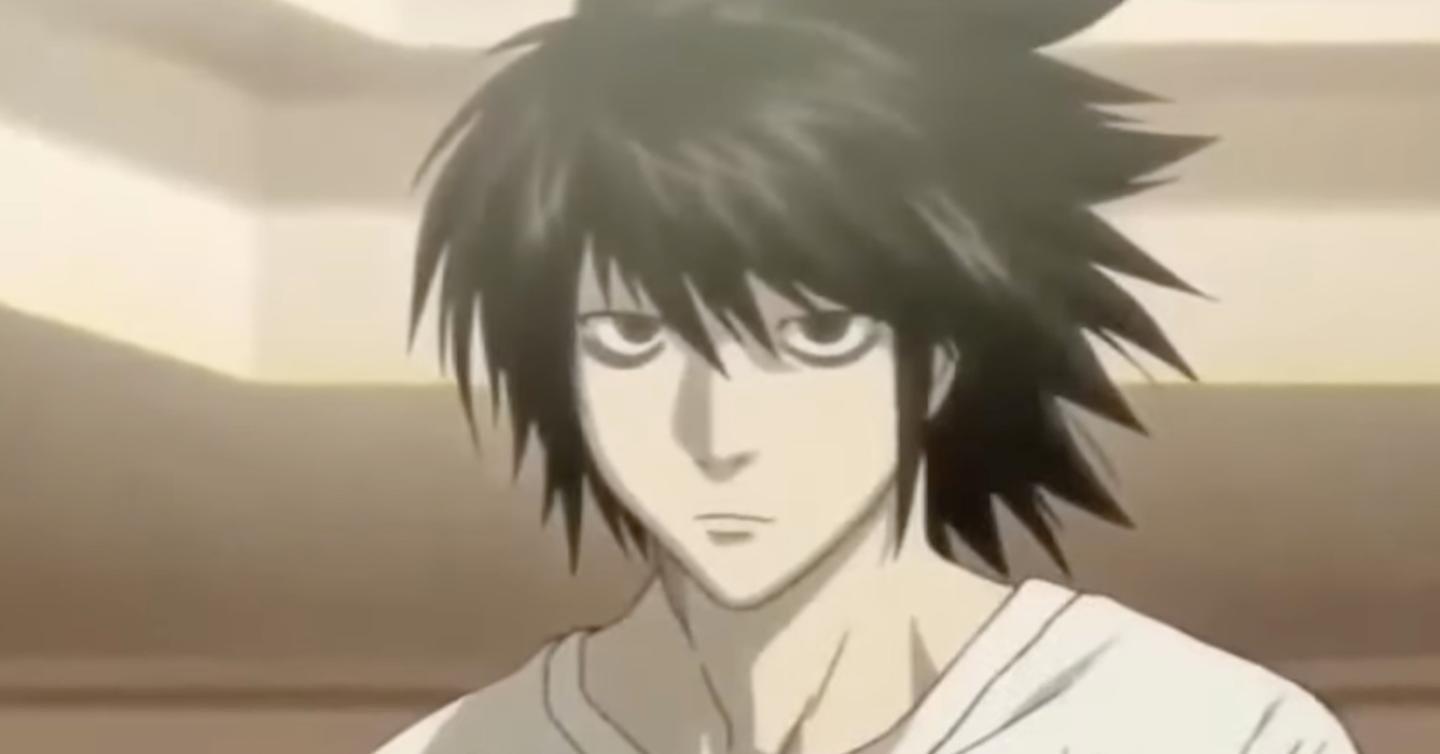Why Does L Look Like That? A Comprehensive Guide To Understanding The Iconic Letter
Mar 21 2025
Have you ever wondered why the letter "L" has its unique shape and appearance? The letter "L" is one of the most recognizable characters in the English alphabet, yet its origins and design are often overlooked. In this article, we will explore the fascinating history and reasons behind its distinct form.
The letter "L" is not just a random stroke on a page; it carries a rich history that dates back thousands of years. From ancient civilizations to modern typography, the evolution of "L" is a story of adaptation and functionality. Understanding its design helps us appreciate the intricate balance between form and purpose in written communication.
This article will delve into the origins of the letter "L," its significance in various cultures, and how its design has influenced modern typography. Whether you're a typography enthusiast, a language lover, or simply curious about the world of letters, this guide will provide you with valuable insights into why "L" looks the way it does.
Read also:Is Chen Zhe Yuan Married Unveiling The Relationship Status Of The Talented Actor
Table of Contents:
- The History of the Letter L
- Origins of the Letter L
- Why Does L Look Like That?
- The Role of Typography in Shaping L
- Variations of the Letter L
- Cultural Significance of the Letter L
- Modern Usage of L in Digital Media
- Psychology Behind the Design of L
- Comparison with Other Letters
- The Future of the Letter L
The History of the Letter L
The letter "L" has a long and storied history that traces back to ancient writing systems. Its journey began in the ancient Near East, where early civilizations developed writing systems to record their languages. The Phoenicians, one of the earliest known civilizations to use an alphabet, created a character resembling "L" to represent the sound /l/.
Over time, the Phoenician alphabet influenced the Greeks, who adapted it into their own writing system. The Greek letter "Lambda" (Λ) became the precursor to the modern "L." As the Roman Empire expanded, the Latin alphabet adopted the Greek version, refining its shape into the "L" we recognize today.
Origins of the Letter L
The origins of the letter "L" can be traced back to the ancient Semitic scripts. The Semitic word for "goat" was "lamedh," and the letter's shape was inspired by the image of a shepherd's staff or a stick used to guide goats. This practical association helped early writers remember the sound associated with the letter.
As civilizations evolved, so did the design of "L." The transition from pictographic symbols to abstract forms allowed for greater efficiency in writing. The simplicity of "L" made it easy to write and recognize, which contributed to its widespread adoption across different cultures.
Why Does L Look Like That?
The design of the letter "L" is a result of both practicality and historical evolution. Its vertical stroke represents the staff or stick, while the shorter horizontal stroke signifies the curve or hook at the top. This combination creates a distinctive shape that is both functional and easy to distinguish.
Read also:Jan Perino The Untold Story Of A Visionary Leader
From a typographic perspective, the "L" is designed to maintain balance and readability. Its asymmetrical structure allows it to blend seamlessly with other letters, ensuring smooth transitions in written text. This balance is crucial for maintaining clarity in both handwritten and printed materials.
The Role of Typography in Shaping L
Typography plays a significant role in how the letter "L" is perceived. Different typefaces emphasize various aspects of its design, from the thickness of its strokes to the angle of its curves. For example, serif fonts often add decorative flourishes to the ends of the strokes, while sans-serif fonts maintain a clean and minimalist appearance.
Modern typographers continue to experiment with the design of "L," adapting it to suit digital formats and new technologies. This flexibility ensures that the letter remains relevant and visually appealing across various mediums.
Variations of the Letter L
Throughout history, the letter "L" has taken on many forms. Here are some notable variations:
- Capital L: A tall, straight letter with a short horizontal stroke.
- Lowercase l: A simple vertical line, often confused with the number 1 or the letter "I" in some fonts.
- Cursive L: A more elaborate version with loops and curves.
- Calligraphic L: Ornate designs used in artistic writing.
Each variation serves a specific purpose, whether it's for formal documents, artistic expression, or everyday communication.
Cultural Significance of the Letter L
In many cultures, the letter "L" holds special significance. For instance, in some languages, it represents luck, love, or light. In numerology, "L" is often associated with balance and harmony, reflecting its symmetrical design.
Moreover, the letter "L" appears frequently in popular culture, from logos to brand names. Its versatility and recognizability make it a favorite among designers and marketers.
Modern Usage of L in Digital Media
In the digital age, the letter "L" has found new applications in various forms of media. From social media platforms to mobile apps, "L" is used to convey messages, create logos, and enhance user interfaces. Its simplicity and clarity make it an ideal choice for digital typography.
Additionally, the rise of emoji culture has given "L" a new meaning. The "L" hand gesture, often used to signify "loser," has become a popular meme on social media. This demonstrates how letters can evolve in meaning and usage over time.
Psychology Behind the Design of L
From a psychological perspective, the design of "L" appeals to our innate preference for simplicity and order. Its clean lines and straightforward structure make it easy to process visually, which enhances readability and comprehension.
Studies have shown that letters with fewer curves and more angular shapes are perceived as more efficient and professional. This aligns with the characteristics of "L," making it a popular choice in business and technical communication.
Comparison with Other Letters
When compared to other letters, "L" stands out for its unique combination of simplicity and functionality. Unlike more complex letters like "Q" or "S," "L" requires minimal effort to write and recognize. This efficiency has contributed to its widespread use in both formal and informal contexts.
Furthermore, "L" complements other letters well, creating balanced and harmonious combinations in words and phrases. Its versatility allows it to adapt to different fonts and styles without losing its identity.
The Future of the Letter L
As technology continues to evolve, the letter "L" will undoubtedly adapt to new formats and platforms. Advances in artificial intelligence and machine learning may lead to innovative designs that enhance readability and accessibility.
Despite these changes, the core principles that define "L" will remain unchanged. Its simplicity, functionality, and cultural significance ensure that it will continue to be a vital part of written communication for generations to come.
Kesimpulan
Why does "L" look like that? The answer lies in its rich history, practical design, and cultural significance. From its origins in ancient Semitic scripts to its modern applications in digital media, "L" has evolved into a versatile and recognizable symbol.
We hope this article has provided you with valuable insights into the world of letters and typography. If you enjoyed this piece, we encourage you to explore our other articles on language and design. Feel free to leave a comment or share this article with your friends and colleagues. Together, let's continue to appreciate the beauty and complexity of written communication!
References:
- Encyclopedia Britannica - History of the Alphabet
- Typography.com - The Evolution of Letterforms
- Psychology Today - The Aesthetics of Letter Design


